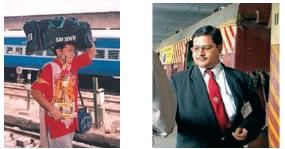Olympiad Test: Transport And Communication -1 - Grade 4 MCQ
10 Questions MCQ Test - Olympiad Test: Transport And Communication -1
Camel is used for transportation in:
The place where ships load or unload goods is called:
This airport was constructed in an area of 865 acres of land, which belongs to HAL and the Airports Authority of India.
Which of the following carry both passengers and goods?
Air hostess profession is related to:
Which of the following road signs is associated with the transport service whose professionals are shown in the given picture?

Cheenu and Geetu were walking on the road. Cheenu was looking at the different signs given for road safety. She told Geetu that people were not following the road signs, which was not good for them also. She saw a no entry sign but a car was entering there forcefully. Which of these road signs did she see?
The persons shown in the following figures belongs to which transport system?

Select the correct statement from the following.



















